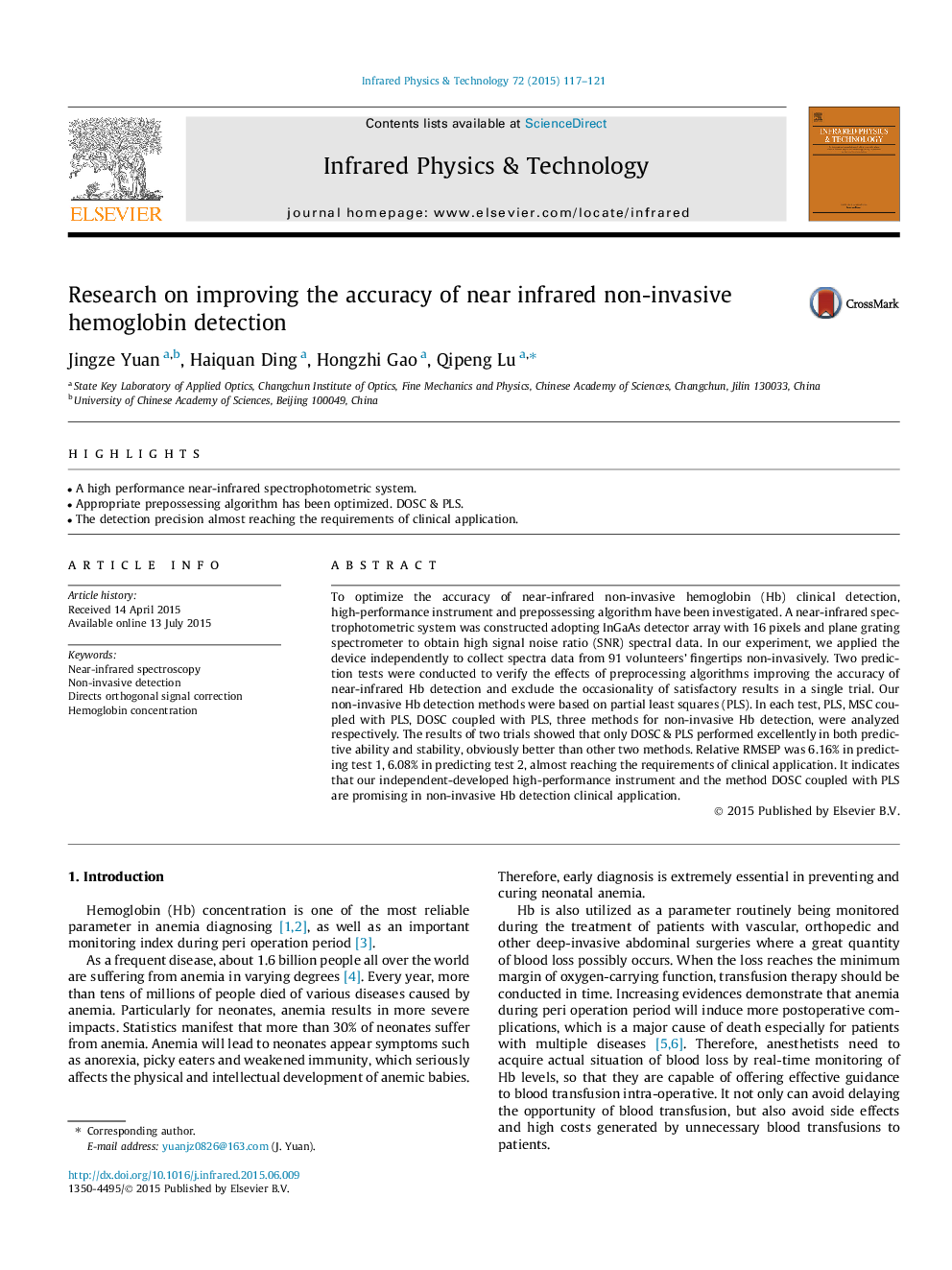| Article ID | Journal | Published Year | Pages | File Type |
|---|---|---|---|---|
| 1784037 | Infrared Physics & Technology | 2015 | 5 Pages |
•A high performance near-infrared spectrophotometric system.•Appropriate prepossessing algorithm has been optimized. DOSC & PLS.•The detection precision almost reaching the requirements of clinical application.
To optimize the accuracy of near-infrared non-invasive hemoglobin (Hb) clinical detection, high-performance instrument and prepossessing algorithm have been investigated. A near-infrared spectrophotometric system was constructed adopting InGaAs detector array with 16 pixels and plane grating spectrometer to obtain high signal noise ratio (SNR) spectral data. In our experiment, we applied the device independently to collect spectra data from 91 volunteers’ fingertips non-invasively. Two prediction tests were conducted to verify the effects of preprocessing algorithms improving the accuracy of near-infrared Hb detection and exclude the occasionality of satisfactory results in a single trial. Our non-invasive Hb detection methods were based on partial least squares (PLS). In each test, PLS, MSC coupled with PLS, DOSC coupled with PLS, three methods for non-invasive Hb detection, were analyzed respectively. The results of two trials showed that only DOSC & PLS performed excellently in both predictive ability and stability, obviously better than other two methods. Relative RMSEP was 6.16% in predicting test 1, 6.08% in predicting test 2, almost reaching the requirements of clinical application. It indicates that our independent-developed high-performance instrument and the method DOSC coupled with PLS are promising in non-invasive Hb detection clinical application.
